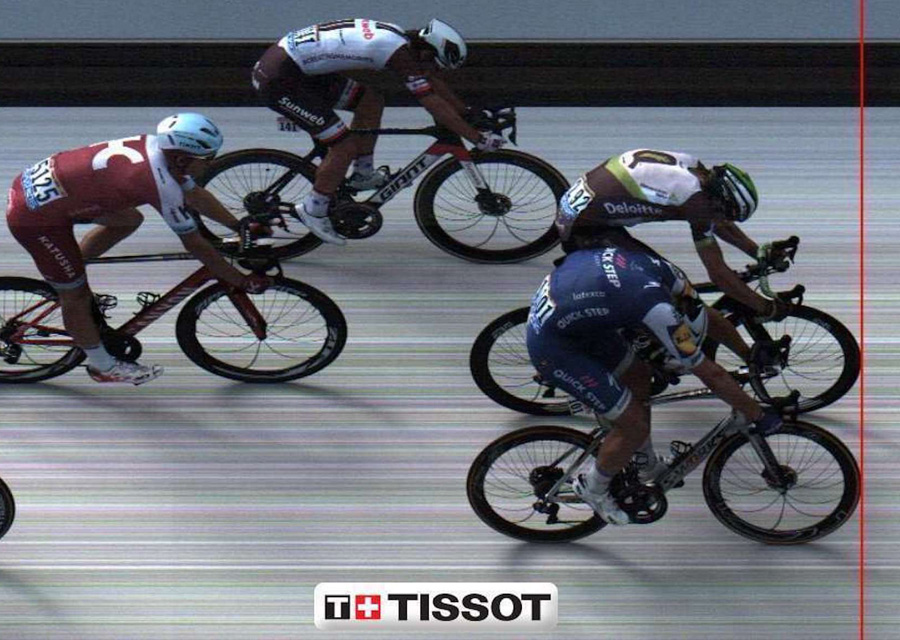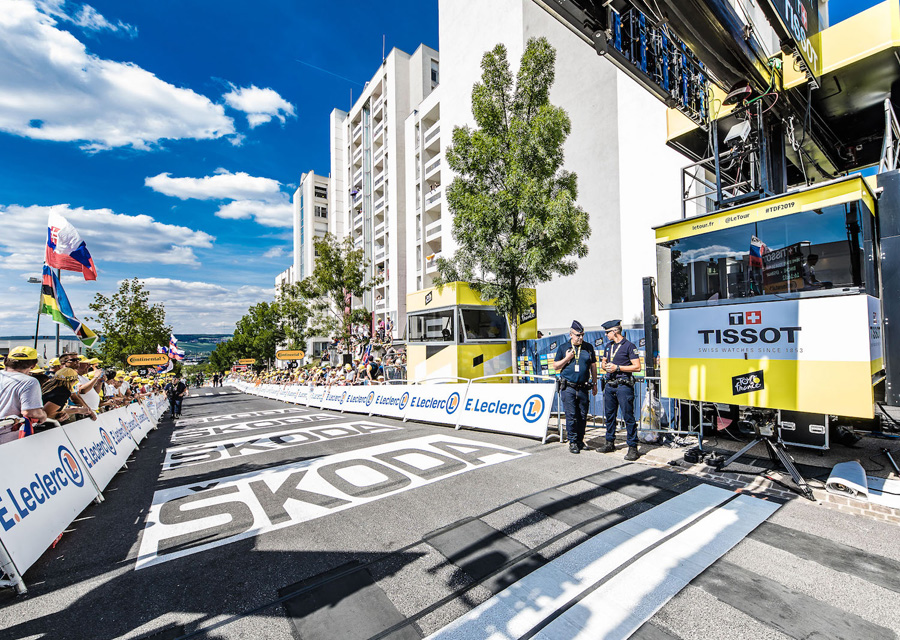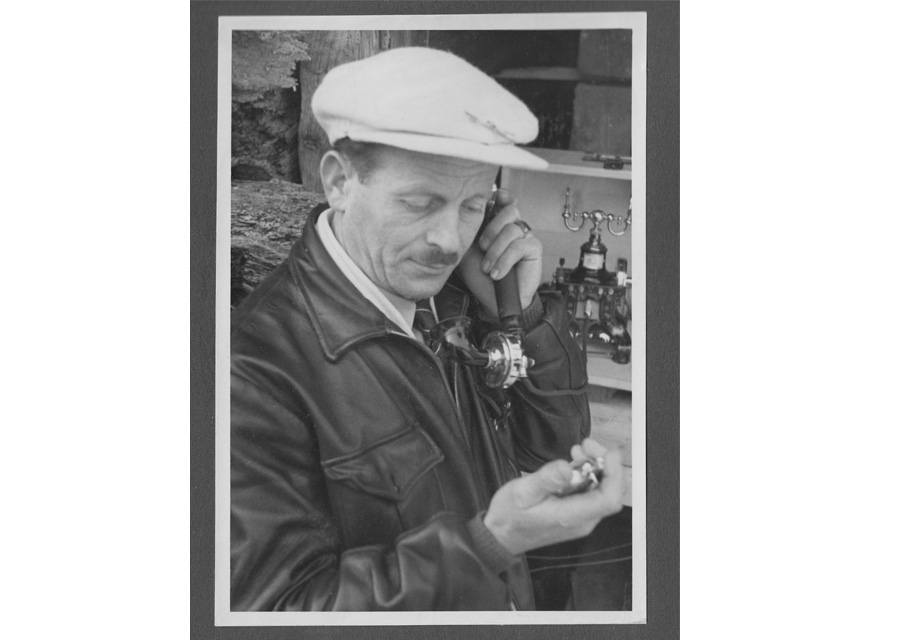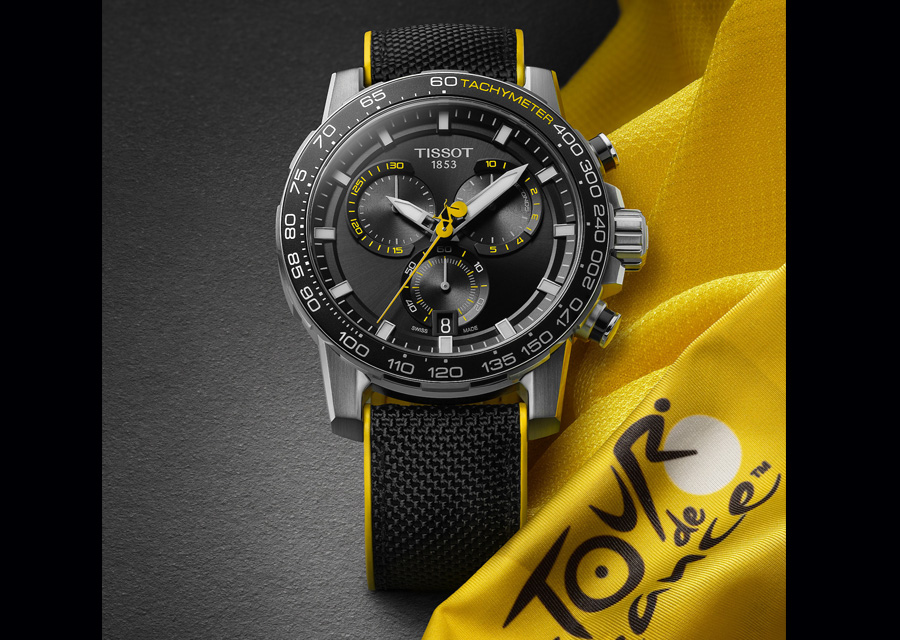Tissot and the Tour de France: a race “with” time
The cutting-edge devices installed by Tissot on the finish line of every stage of the Tour de France are nothing like the brand's 1930s' mechanical chronographs.
Since the 26th of June, France has been reunited with its beloved Tour. It is probably the country’s most liked sports event. One look at the packed crowds along the course is enough to be sure of it. After an eventful start marked by a number of incredible feats, unexpected twists and unfortunate incidents, the distance between potential winners and losers can already be counted in minutes. Still, Tissot Timing – the Official Timekeeper of the Tour de France – can tell the winner down to the millisecond.
0.0003 seconds and 6 mm difference

Will we get a repeat this year of what happened at the finish line of the Troyes-Nuits-Saint-Georges stage, on the 7th of July 2017? On that day, the German cyclist, Marcel Kitten, achieved a now legendary sprint when he got ahead of the Norwegian rider, Edvald Boasson Hagen, by 0.0003 seconds. It represents a 6 mm distance, at the end of a 213.5 km course that lasted for 5 hours, 3 minutes and 18 seconds. To put it simply, it was the closest result ever recorded in the Tour’s history. A few decades ago, the two champions would probably have both been declared winners. But nowadays, cycling can turn to cutting-edge timing devices.
Very high-speed finish line camera

At the end of every stage, the finish line is constantly filmed by a very high-speed camera which can capture 10,000 frames per second. Thanks to this system, it is possible to perceive distance between the photographed racing cyclists down to the millimetre on a horizontal time scale. The only thing left to do for race commissaires is to carefully analyse the photo-finish to designate the winner. According to Sylvain Dolla, the brand’s CEO, Tissot developed a software that helped timekeepers identify each cyclist once they crossed the finish line and to designate the winner thanks to a millimetric precision.
Two tons of materials are transported and about twenty specialists are on site in order to communicate almost instantly the results to the organizers and the media. When a cluster of riders arrives at the same time, Tissot’s teams make it a point of honour to announce the first three arrived in only 5 seconds, the stage’s ranking in 10 seconds and the general ranking in 15 seconds. However, on the 7th of July 2017, in Nuits-Saint-Georges, the difference was so narrow between the first two arrived that almost a minute was necessary to analyse the images and know the name of the winner with certainty – thanks to a photo finish which remains etched in people’s minds.
A watch and a telephone

It is easy to imagine that a Tissot watchmaker sent to be the timekeeper during the brand’s first timed sports event (the international university ski championship in Switzerland) would have been overtaken by doubt if faced with the same situation. On that 14th of January 1938, the brand only had a watch and a telephone to give the measured times to the supervisors of the event. Still, the accuracy of the timing was applauded by the organizers.
A chronograph specially made for the Tour de France

As Tissot announced that it was once again in partnership with the Tour de France, the brand released a watch, made for cycling fans, sporting the colours of the event. This unequivocally sports model – a black with yellow touches piece – was unsurprisingly named Tissot Supersport Chrono Tour de France. It is a chronograph powered by quartz movement located inside a 45.5 mm diameter case. The race is represented by a bicycle on the central small-seconds and the name of the event engraved on the case back.
On the 18th of July, once the stage comes to an end on the Champs-Élysées, the piece will turn into this summer’s perfect leisure watch with its water resistance up to 100 m and its Nylon and rubber strap.